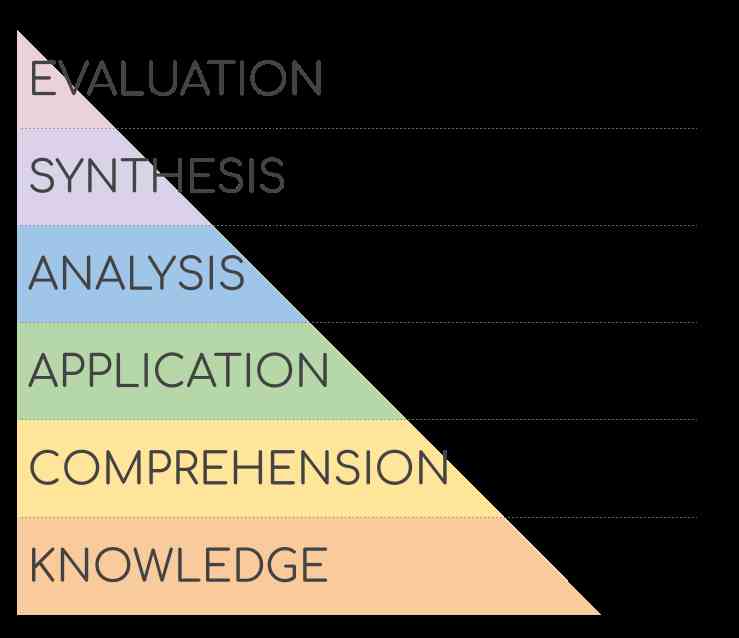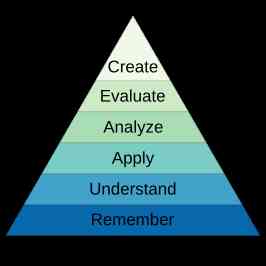In this world that we live in, thinking skills are not only a complement for us, but also a basic skill that we must have. Effectively, almost all ways of thinking are helpful life skills and are necessary for success in personal, school, and social life. From this side, HOTS emerge as an essential skill for someone in facing everyday life. Here are the explanations of HOTS that you have to know.
Higher Order Thinking Skills (HOTS)
HOTS, which stands for High Order Thinking Skills, are the ability to connect, manipulate, and change existing knowledge and experience critically and creatively in determining decisions to solve problems in new situations (Dinni, 2018). According to Stein and Lane (1996), HOTS is complex thinking, non-algorithmic thinking in solving difficult and unpredictable problems, or solving problems explicitly. This is in line with Senk et al. (1997), who stated that HOTS has the characteristic of solving unusual problems and the solution to the problem is the result of thinking and reasoning.
HOTS was first introduced by Benjamin S. Bloom through his book Taxonomy of Educational Objectives: The Classification of Educational Goals (1956). Bloom's taxonomy is a hierarchical structure or level that identifies thinking skills, starting from the lowest level to the highest level. The following are the levels of taxonomy proposed by Bloom:

In the first level, Bloom started the pyramid with knowledge, then comprehension, application, analysis, synthesis, and ended with evaluation. Here are the explanations:
Knowledge: The ability to acknowledge facts, terms, or concepts without having to accept or apply them. The skills are identifying, making lists, summarizing, etc.
- Comprehension: The ability to acknowledge and use previously learned materials. The skills are explaining, concluding, giving examples, etc.
- Application: The ability to put in theories, concepts, or methods in real and new situations. The skills are showing, expressing, demonstrating, etc.
- Analysis: The ability to solve a problem into smaller parts to acknowledge their connection. The skills are connecting, making outlines, drawing conclusions, etc.
- Synthesis: The ability to merge components to generate something new, such as a plan, writing, or procedure. The skills are combining, categorizing, and composing.
- Evaluation: The ability to gain a concept, statement, or situation based on certain criteria. The skills are assessing, estimating, comparing, etc.
Then, in 2001, Anderson and Krathwohl revised some of Bloom's ideas. The results of this revision are known as the Revised Bloom's Taxonomy. The revised version is as follows:

In the first level, Anderson and Krathwohl started the pyramid with remember, then understand, apply, analyze, evaluate, and ended with create. Here are the explanations:
- Remember: It is the most basic ability in thinking. In this level, someone is recognizing or remembering information that has been learned. To make it meaningful, it must be associated with broader knowledge. The skills are identifying, citing, mentioning, etc.
- Understand: Someone demonstrates understanding by admitting and explaining information that has been learned. The skills are interpreting, summarizing, and explaining.
- Apply: Employing knowledge or procedures to break down problems or run a task. The skills are practicing, using, and executing.
- Analyze: The ability to solve a problem into smaller parts to acknowledge their connection. The skills are describing, organizing, comparing, etc.
- Evaluate: Assessing a concept or situation on certain criteria. The skills are assessing, criticizing, testing, etc.
- Create: Combining different elements to construct something new. The skills are producing, designing, building, etc.
Furthermore, in the book, Bloom also divided taxonomy into three domains: cognitive, affective, and psychomotor. First, the cognitive domain, which is the focus of the handbook, is concerned with remembering knowledge and developing thinking abilities and skills. Bloom's taxonomy in the pyramid above is part of this domain. Second, the affective domain, which involves goals related to changes in interests, values, attitudes and the progress of self-esteem and adjustment. Third, the psychomotor domain, which involves physical or motor skills, including movement, body coordination, and practical skills.
On the other hand, King, Goodson, and Rohani (2018) stated that HOTS included critical, logical, reflective, metacognitive, and creative. They explain some key concepts related to the higher-order thinking process based on three assumptions about thinking and learning.
- The level of thinking and the level of learning are interrelated and have various components and levels, so they cannot be separated.
- Learning is not only obtained from formal education but also from the surrounding environment.
- Higher order thinking requires an assortment of thinking processes put into complex situations and having diverse variables.
The Importance of Higher Order Thinking Skills (HOTS)
From the definition and concept of HOTS above, it can be concluded that HOTS is very important in our lives. HOTS helps us to think more critically, creatively, and independently in solving various problems. Its existence makes us not only remember information but also understand, analyze, evaluate and create new solutions in dealing with any problem or situation. This ability is very much needed in all areas of life. With HOTS, we adapt to change, make the correct decisions, and clear up problems in a more efficient way.
In addition, HOTS also plays a role in increasing innovation and creativity in various fields. In the workplace, HOTS helps someone to understand different opinions, be more open-minded, and make wiser decisions based on in-depth analysis. Therefore, the development of HOTS should be the main focus in education to guarantee that every person is better prepared and more confident in facing upcoming problems.









